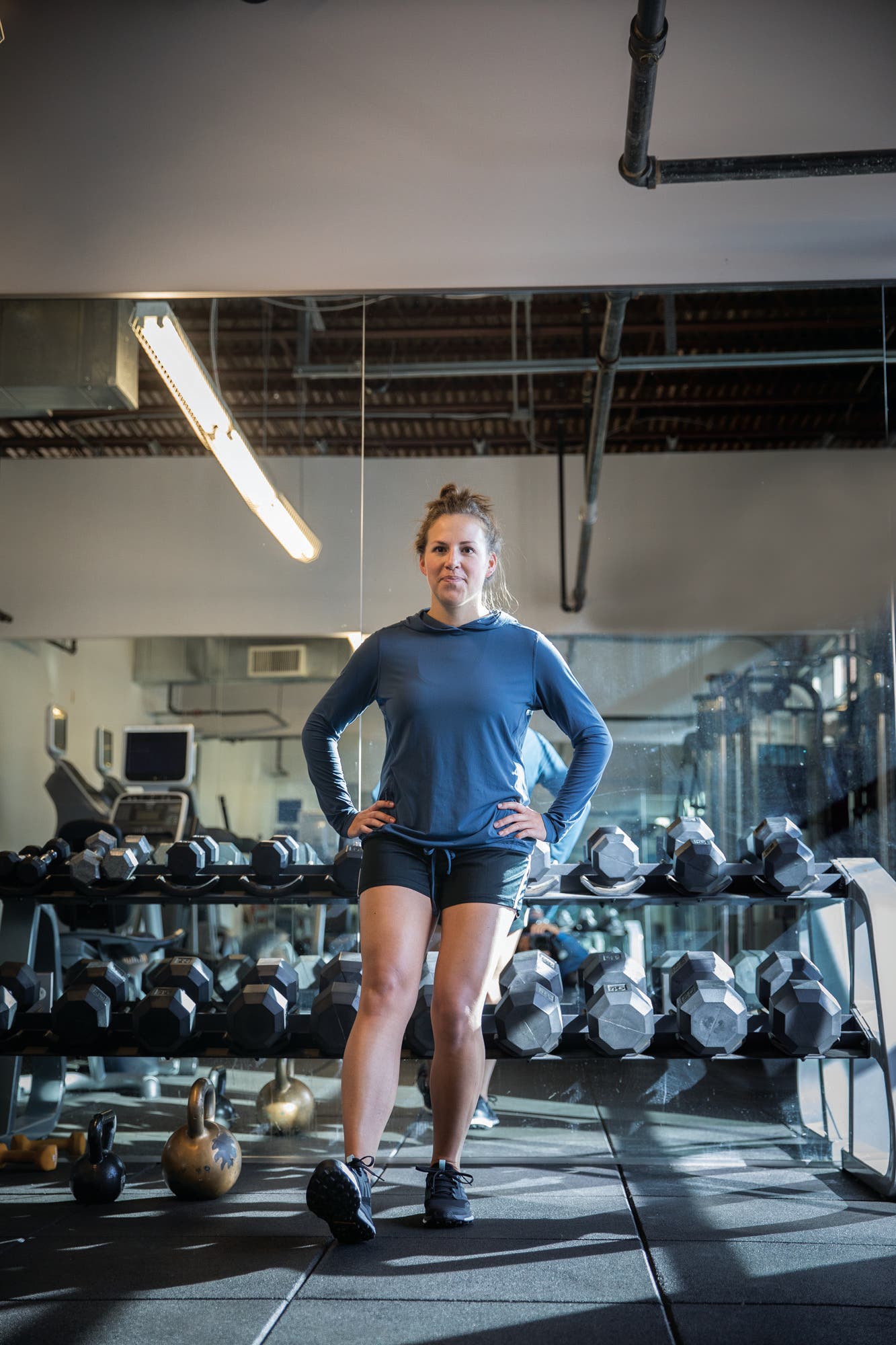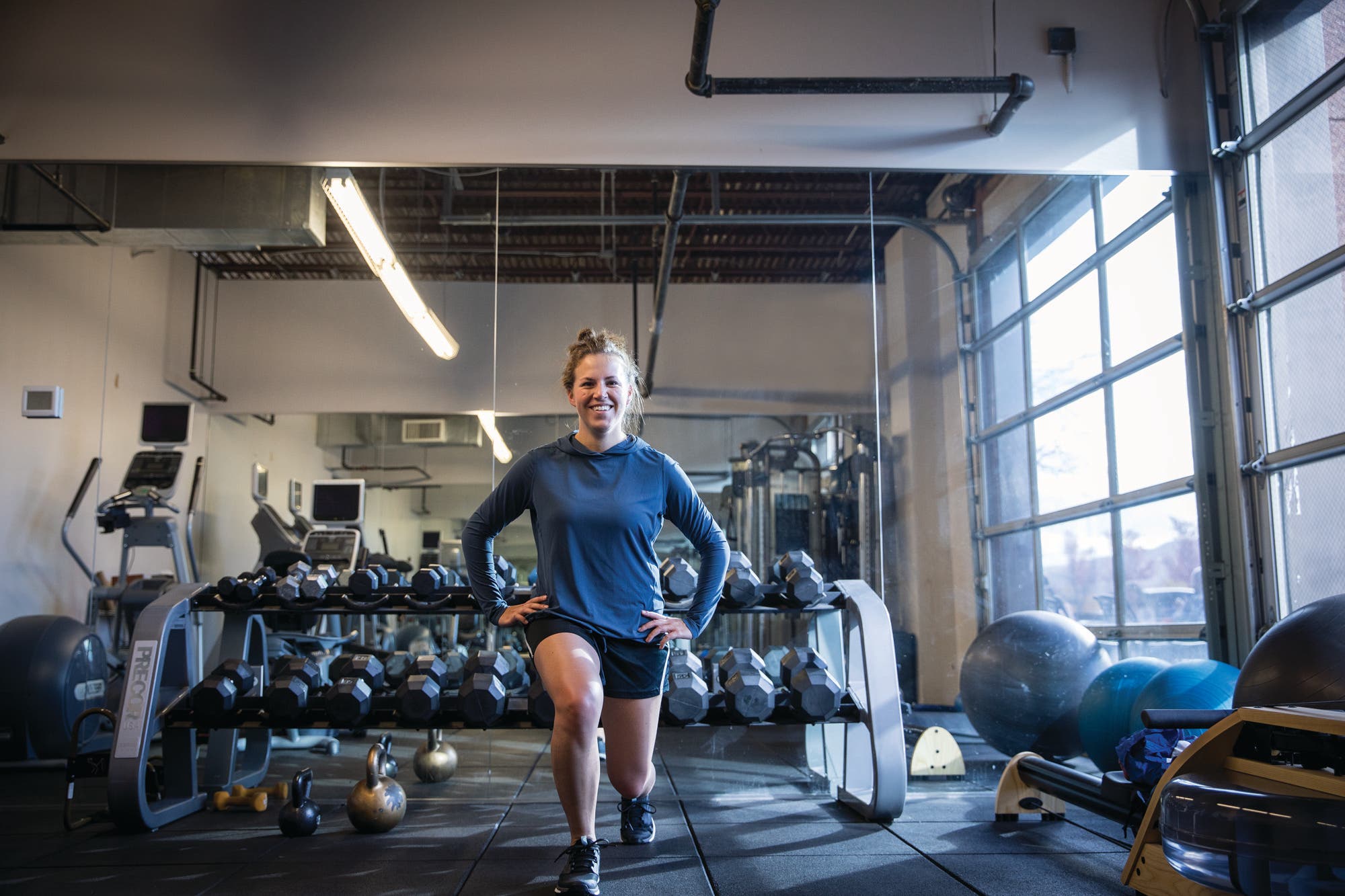3 Hip Exercises for Healthier Hiking

Weak at the knees? Your hips might be to blame. Lack of strength in major hip and glute muscles can result in imbalances that strain the tendons and tissues that connect your pelvis to your knees. Swelling, popping sounds, or pain lasting longer than two weeks can indicate a more serious issue (check with a medical professional), but pain below the kneecap can often be fixed with a regular hip-strengthening routine. Do this one three days a week for eight weeks before your hiking season.
Clock Reach

What A balancing exercise targeting the gluteus medius (hips) and quads
Why Boost eccentric hip strength to improve strength and balance on descents.
Sets 3 Reps 10 (each leg) Rest 15 seconds
1. Balance on your left foot. Bend your left knee until it feels challenging but not shaky.
2. Extend your right foot forward and tap your heel to the floor. Keep hips level and keep your knee in line with your ankle. Return to the first position.
3. Reach your right foot 12 inches to the right and tap the floor. Return to the first position.
4. Extend your right foot as far behind you as possible without further bending your left knee. Return to the first position.
Make it harder: Deepen the bend to reduce the angle between your thigh and calf (don’t go beyond 45 degrees).
Running-Man Lunge

What A single-leg static lunge
Why Boost quad strength and hip stability.
Sets 3 Reps 10 (each leg) Rest 15 seconds
1. Balance on your left leg and raise your right leg at a 90-degree angle (your thigh should be level with your hip).
2. Keeping your knee stacked over your toes and your weight on your left leg, bend at the knee and slowly extend your right leg behind you until the ball of your foot touches the ground in a lunge position. Keep your pelvis level (put your hands on your hips to detect drooping). Lunge deep enough that it’s challenging but not shaky.
3. Activate your glutes to push your right leg up and forward to the starting position.
4. Complete all three sets on one side before switching legs.
Make it harder: Increase the depth of the lunge until you can lower your knee to just above the floor.
Starfish Plank

What A sideways plank that activates the core and the lateral muscles of the leg
Why Strengthen muscles that support your knee to improve stability under heavy loads.
Sets 3 Reps 10 (each side) Rest 15 seconds
1. Lie on your left side so you’re supported by your left elbow and forearm. Keep your shoulders in line with your upper left arm, stack your feet, and maintain a straight spine and neck.
2. Activate your glutes and lift your hips to press into a side forearm plank.
3. Lift your upper leg up until it’s slightly above parallel to the floor, keeping your neck, spine, and lower leg aligned. Simultaneously raise your upper arm, keeping your hand, elbow, and shoulder in a straight line. Hold for 2 seconds.
4. Return to a resting position.
Make it harder: Add two seconds to each rep.
The Expert: Alex Lanton, from Atlas Physical Therapy in Colorado, has spent 10 years treating knee issues in outdoor athletes. When he’s not helping patients, he’s traveling the world, trekking everywhere from Patagonia to Scotland.